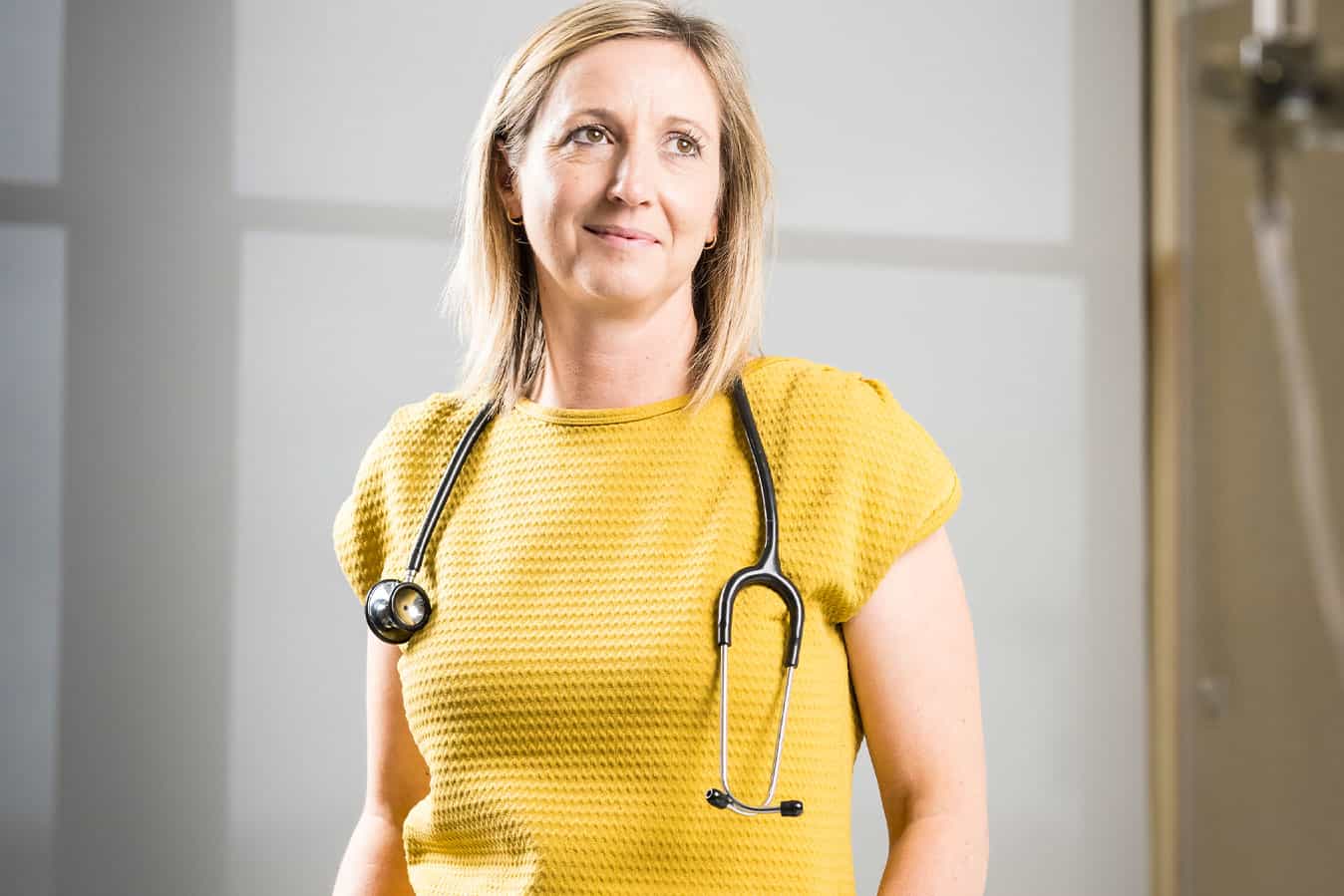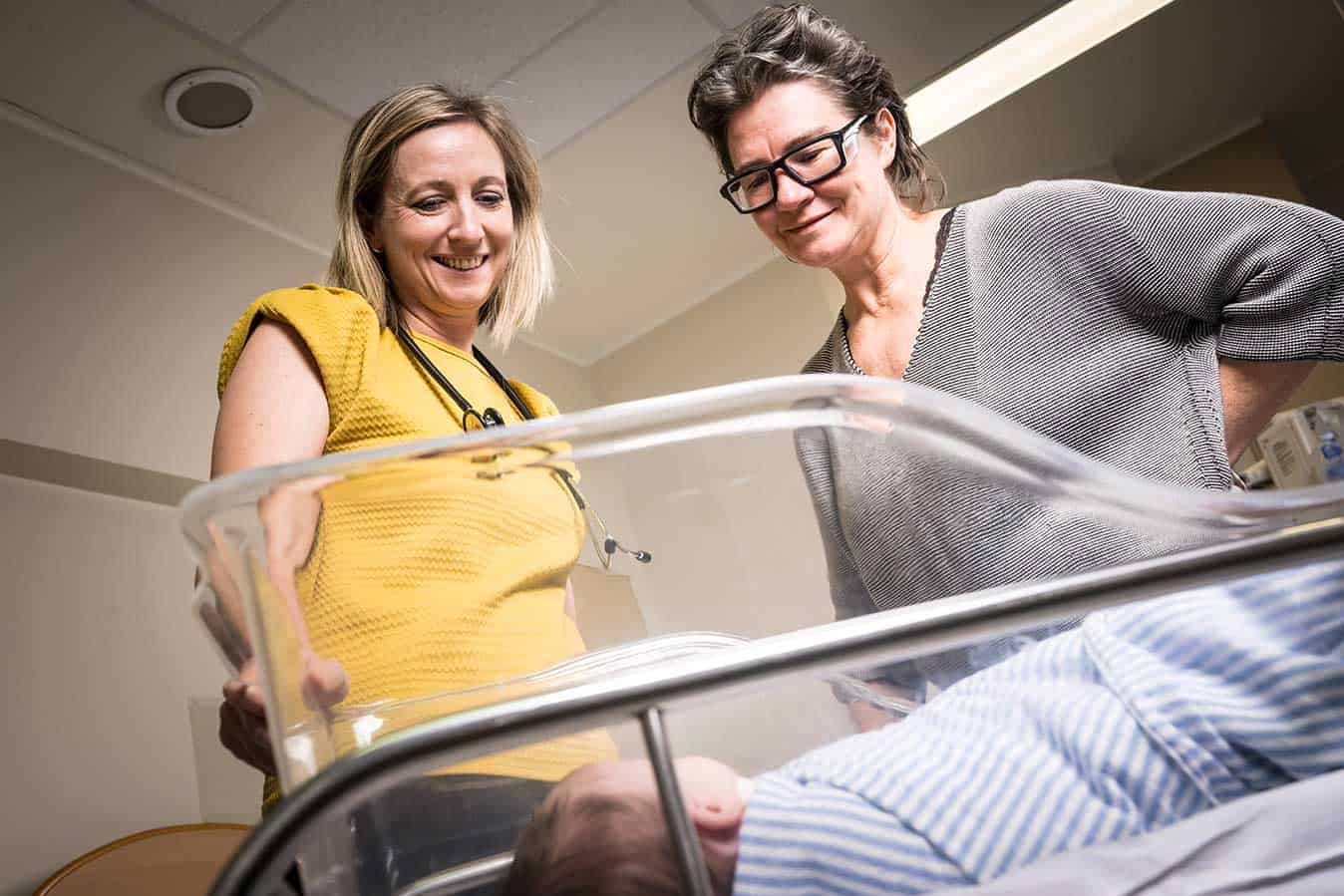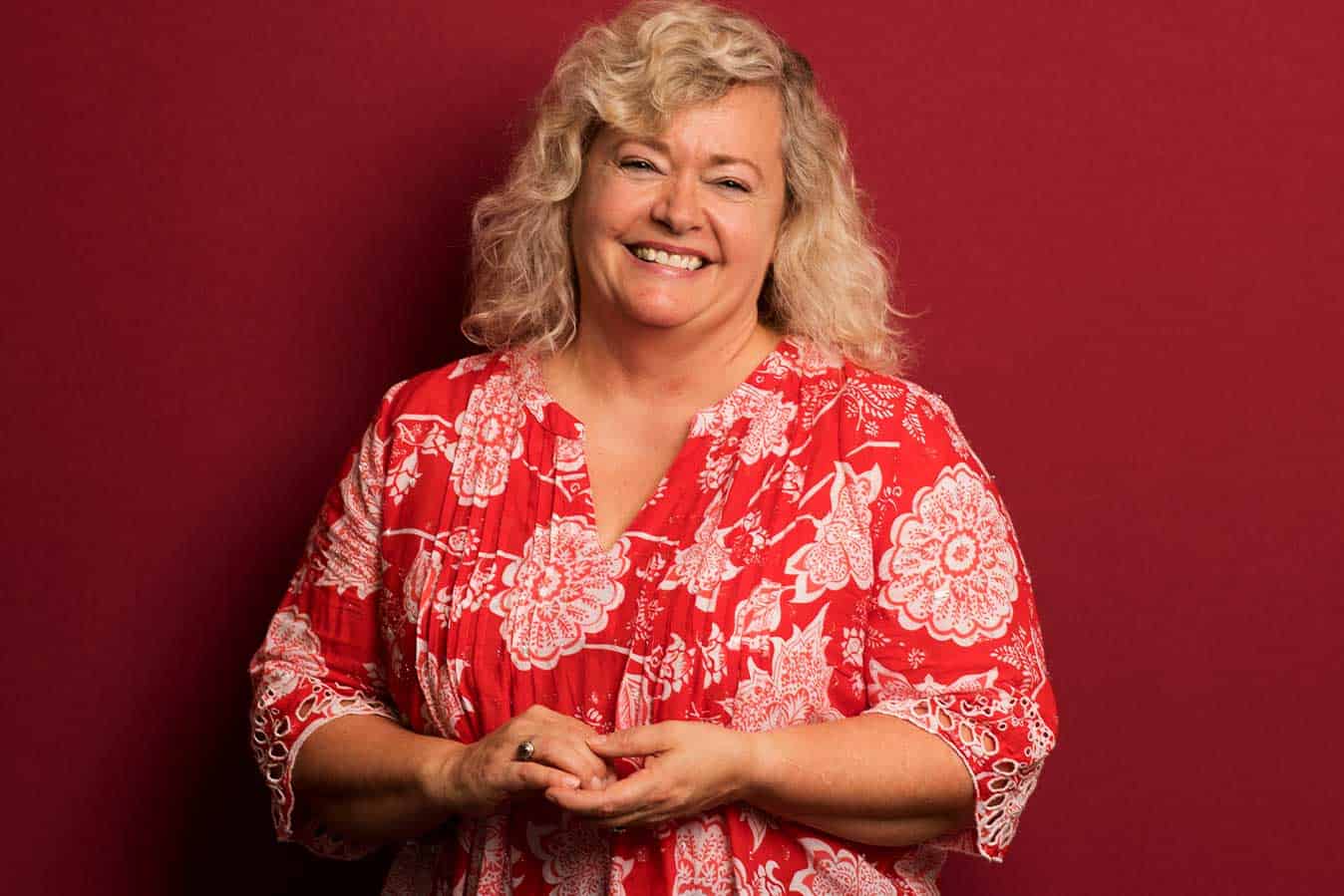Continuity of midwifery care is associated with better outcomes for mothers and babies, yet, it’s not available to everyone. While support for these models is growing in Australia, more needs to be done, writes Robert Fedele.
In 2020, Castlemaine Health, a rural health service in central Victoria, resolved to suspend its maternity service and commission an external review amid concerns over quality and safety.
The decision forced local pregnant women to look elsewhere to birth, and left midwives and the broader community shocked, midwife and ANMF (Vic Branch) member April Jardine tells the ANMJ.
Those women were supported to birth nearby, with most refocusing to the regional centres of Bendigo and Ballarat.
Meanwhile, the tight-knit community, angered at the potential loss of a vital health service, advocated for its survival. An action group, called Supporting Birth at Castlemaine Health, lobbied local government, including garnering over 1,000 submissions from local parents, and holding protests out the front of the hospital.
A year later, following a comprehensive review undertaken by a Governance Committee consisting of key stakeholders including the ANMF (Vic Branch), Department of Health, Safer Care Victoria, Regional Liaison Midwife, Bendigo Health representatives, consumers and the Board, birthing services re-commenced in Castlemaine, this time under an agreed maternity model of care for women and their families. It was underpinned by continuity of midwifery care called Midwifery Group Practice, where women receive care from a ‘known’ midwife throughout pregnancy, birth and the early postpartum period.
Widespread evidence concludes women experience better outcomes when midwives are the primary maternity care providers and work collaboratively with other providers to coordinate maternity care.
Considered the gold-standard for maternity care, women who choose these models experience fewer interventions during birth, reduced caesarean births, less epidural analgesia, and greater satisfaction with care provision. The model also translates to reduced health system costs.

Under the previous maternity care model, led by a General Practitioner Obstetrician (GPO), midwives in Castlemaine provided some degree of continuity of care for women and families but had limited access during the antenatal period and, critically, weren’t able to work to their full scope of practice, reveals April.
Relaunching as Dhelkaya Health, meaning ‘being healthy’ in the Dja Dja Wurrung language, the first birth under the new model occurred in June 2021.
April, now the service’s Maternity Unit Manager, was a member of the Governance Committee and multiple working parties. Along with key stakeholders, she helped support the development and implementation of the MGP model in collaboration with her colleagues and the medical team at Dhelkaya Health. A recent independent evaluation by La Trobe University, which covered the first year of operation, found the model to be highly valued by local women, and staff.
The woman-centred, culturally safe and collaborative model of care offers women three care pathways depending on their needs – midwifery group practice, collaborative shared care and complex maternity care.
The service has two birthing suites equipped with birthing beds, neonatal resuscitation equipment, a bath for water immersion for pain relief in labour and cardiotocograph (CTG) capability.
Four MGP midwives work within the model and are on call for the woman’s labour and birth. Each typically has a caseload of 27 births every year, providing pregnant women considered low-risk with continuity throughout their maternity journey. While midwives are ‘on call’, four days each fortnight are ‘protected days’, so they can switch off their phones and reset, to help avoid burnout.

According to April, more needs to be done to help grow midwifery continuity of care models. The ANMF (Vic Branch), consistent with La Trobe University’s evaluation recommendations, have continued consultation with multiple regional maternity services across the state, using the template of the Castlemaine model as a guide for replication, noting that each maternity service has its own nuances for its own community and workforce.
“There’s enough evidence out there that shows there’s improved outcomes for women who receive continuity of midwifery care yet at a government level, there appears to be little support in changing the funding to allow these sorts of models to be sustainable,” says April.
Better for women
Leading midwife, academic and researcher Hannah Dahlen, Professor of Midwifery at Western Sydney University, says Australia must invest more to give all women access to these midwifery continuity of care models.
Professor Dahlen said it was “a national shame” that only an estimated 10-15% (Australian Institute of Health and Welfare) of the country’s women were able to do so.
“If we actually really cared about that, we would do an awful lot more to support it,” she says.
Professor Dahlen, herself, worked within a Midwifery Group Practice up until 2000. Seeing the benefits first-hand helped solidify her own research that the models not only work better for mothers, but midwives too.
“Inevitably, our research comes back again and again, that the best outcomes for women, in terms of physically for them and also their baby, and then in long-term satisfaction and reduction in birth trauma, is continuity of midwifery care,” Professor Dahlen explains.
Global research echoes those findings.
A 2016 Cochrane Review, a systemic review of research into midwife-led continuity models versus others for childbearing women, which included 15 trials and over 17,000 women, found women who received midwife-led continuity models of care were less likely to experience intervention, experienced fewer preterm births and neonatal deaths, and were more likely to be satisfied with their care.
While midwifery continuity of care has more than proven its value, Professor Dahlen points out that models can vary widely. If they are to become more accessible, she believes they must become more adaptable so midwives can work with greater flexibility as part of a cohesive team.
“Some people love being on call 24-hours a day; they live for it,” she explains.
“And while we know women love that, because they get very high-continuity, it’s not right for all midwives.
“[We also need] midwives working in partnerships and groups where they get on. The other critical part is making sure they’re well managed and have good managers that fight for them, advocate for them, and explain the model.
“There’s a lot of misunderstanding about the models, a feeling out there that somehow they (MGPs) think they’re special, or different. And they are different, and they are special, but it doesn’t mean everybody else that’s working out there in maternity care isn’t also special and different,” Professor Dahlen says. “It’s explaining that so it doesn’t become an ‘us and them’ situation.”

As midwifery worldwide faces looming workforce shortages, compounded by issues such as heightened workloads and lack of ratios, as well as increased burnout and exhaustion amplified by the COVID-19 pandemic, Professor Dahlen warns that the profession needs to navigate the oncoming storm.
At Western University, enrolments in the Bachelor of Midwifery are strong, she says. The problem isn’t that people don’t want to become midwives but, rather, that the health system is burning them out.
“They’re not able to work in models of care that give them satisfaction; the ones that they train for, and want to work in. Expanding more options for midwifery models of care is a really critical way to help deal with this.”
For midwifery continuity of care models to be expanded, Professor Dahlen believes core issues such as flexibility, workload, and potential burnout, must be addressed.
Her research shows leadership and management in midwifery-led continuity of care models is a key piece of the puzzle.
A 2019 joint paper that explored essential attributes of Australian midwifery leaders described the ideal Midwifery Group Practice manager as someone who stands up for midwives and women. That they can ‘hold the ground for midwifery, and for women’, while also juggling the unique needs of the service.
“We’ve got to pay our midwives what they’re worth. We’ve got to look after them, defend them, promote them, and put our money where our mouth is.
While everybody advocates for this, on the ground you still have a lot of ‘them and us’, [with] midwives being treated badly, or even other midwives saying ‘what is it you actually do?’.”
Future proofing the workforce
Revealingly, in late 2022, La Trobe University’s School of Nursing and Midwifery released its FUCHSIA (Future proofing the midwifery workforce in Victoria) report. Examining the health, wellbeing and sustainability of the state’s midwifery workforce, over 1,000 Victorian midwives responded to surveys, along with over half of the managers of Victorian maternity services.
The report identified significant EFT (equivalent full-time positions) deficits across the workforce, with a shortfall of at least 200 midwives at the time of the study. A key recruitment challenge was a lack of ‘experienced midwives’, while midwifery turnover was also high, with almost 40% saying they regularly thought about leaving the profession, and over one quarter planning on leaving in the next five years due to feeling ‘worn out’, experiencing ‘work-related stress’ and being ‘disillusioned with midwifery’.
Key midwifery workforce challenges identified included physical and mental health issues, poor workplace culture, heavy workloads due to inadequate midwife-to-patient ratios and insufficient numbers of staff, and significant concerns about skill mix.
“The midwifery workforce in Victoria is under substantial stress. There are engaged and motivated midwives entering the profession, but there are ongoing issues around the retention of ‘experienced’ midwives in relation to burnout, job satisfaction, workplace culture, workplace safety, and quality of care,” the report concluded.
To improve midwifery workforce sustainability, the report recommended focusing on five key areas – workforce planning and flexibility, working conditions, workplace culture, early career workforce/skill mix issues, and increasing the recognition of midwifery as a respected and independent profession with unique needs and philosophies separate to nursing.
The recommendations are consistent with ANMF (Vic Branch) strategies and work to improve the working environment of midwives.
For example, the branch is currently working with Safer Care Victoria, the Department of Health and three health services on a rostering project aiming to make work more flexible for members. While lobbying by the ANMF saw the Andrews Labor Government commit to introducing new postnatal night-shift ratios of 1:4 in Level 4, 5 and 6 services under the Safer Care Victoria Maternity Capability Framework.
In January 2023, the branch also began work on a maternity workforce initiative trial to investigate options to support and retain midwives, bring midwives back to the bedside, and reduce workloads.
State of midwifery
Honing in on shared midwifery issues across states and territories, the Australian Nursing and Midwifery Federation (ANMF) Federal Office recently established a dedicated Midwifery Officer Network, with Professional Officers from the union’s branches meeting monthly to tackle emerging challenges.
Some of the most critical relate to workforce shortages and workload issues, triggered by inadequate midwife-to-patient ratios across some states and territories. The Queensland Nurses and Midwives’ Union (QNMU), for example, is campaigning for governments to ‘Count the Babies’ in midwifery workloads.
“It’s unsafe for mums and babies, and midwives at the moment,” says ANMF Federal Professional Officer and registered midwife Jasmine Kirk.

“If we don’t have enough staff, it leads to unsafe care for midwives, and unsafe care for the people that we’re looking after.
“To stretch midwives that far, and to sometimes bring nurses into postnatal wards because we don’t have enough midwives, is inadequate, as nurses don’t have the same skills.”
According to Ms Kirk, other major issues include the over medicalisation of childbirth, with Australia’s caesarean rate continuing to climb, and increasing rates of burnout, largely due to lack of staff and resources.
“The work is really emotionally draining and can lead to quite a bit of trauma, despite the parts of it that are very rewarding,” Ms Kirk suggests.
The ANMF believes one solution lies in strengthening continuity of midwifery care models, thereby reducing medical hours, and increasing women-centred care led by midwives working to their full scope.
The union’s recently released Midwifery Continuity of Care Information Sheet argues that in order to improve Australia’s continuity of care provision, geographical and financial accessibility to these models must be increased, especially for rural or remote areas. It calls for greater public awareness, and continuity of care models that offer flexible work arrangements, appropriate personal and development leave, and clear career pathways.
Similarly, following negotiations by the ANMF (Vic Branch), the state’s 2020-24 public sector nurses and midwives enterprise agreement stipulates Midwifery Continuity of Care model arrangements must include appropriate back up and support by other midwives at all times, including the ability to handover to other suitably qualified and skilled midwives, as well as appropriate workloads, remuneration and evaluation of the model to ensure safe, accessible and sustainable maternity care.
“Midwifery continuity of care offers a better work environment for midwives, meaning they are more likely to stay within the workforce once they’ve achieved the right balance,” says Ms Kirk.
Making it a reality
Back in Castlemaine, Dhelkaya Health’s MGP model has now delivered nearly 100 babies since it re-opened in 2021. About 200 women are waiting to book into the service.
Harcourt mother Siena, who recently gave birth to her first child, Gloria, chose to receive MGP care through the service after hearing positive stories.
“When I fell pregnant, it was just the obvious choice,” she recalls.
“Pregnancy, labour and birth, and postpartum, it’s an incredibly vulnerable time, and having somebody who knows you, having a familiar face, and somebody who knows your medical history, your kind of family situation, and just knows you, feels likes it’s going to have more positive outcomes. And it does, the evidence seems to show it has more positive outcomes but it just felt like that (MGP) would be more supportive for me.”
At the service, Siena was primarily supported through her maternity journey by midwife Maegen Kendall.

“She was available throughout the pregnancy and then six weeks postpartum as well,” says Siena, who described the experience as empowering.
“We had regular sessions with her, where I felt like I really had time to talk through any and all of my questions, and there are a lot of questions in your first pregnancy. I could call her as well, and her work phone would divert to one of the other midwives if she was on leave or not on call that day. I just felt like I had a lot of support.”
MGP Maternity Unit Manager April says it’s stories like this that reinforce why continuity of care is so important.
“I [recently] went into the birth room as the second midwife and I just sat quietly in the back of the room and just watched the connection that the midwife and the woman and her partner had formed.
“To be able to see that trust with both of them, and the support and time and respect given in that environment to be able to birth their baby, was really uplifting.”
Notwithstanding the undeniable benefits, midwifery continuity of care models, and others like them, need to be better supported if they are to grow across the country.
While the La Trobe University evaluation found the new model was valued by women and staff, it also uncovered several barriers to sustainability. These included concerns over core midwife staff shortages, which increased workload and the potential for burnout, and fears about costs and the funding model.
The report made more than a dozen recommendations, including employing more MGP midwives to reduce the caseload of each member, re-evaluating the funding model, providing greater flexibility around shifts required for Castlemaine MGP midwives at Bendigo Health, and exploring a combined graduate midwifery program between Castlemaine Health and Bendigo Health to ‘grow their own’ midwifery workforce.
April says the service welcomed the strong feedback, as it drives to implement a safe, collaborative and sustainable maternity service.
“Establishing a new model from scratch, it was always going to be imperfect,” she says.
“We needed to look at how we could keep improving to make it sustainable into the future and we have something [the evaluation] really tangible to work with.”
Since the evaluation, the service has already begun advertising for a fifth MGP midwife to help reduce, and spread out, caseloads. April’s position will also be expanded and increased, so she has more time to support staff. While a graduate will come on board from next year.
Funding remains problematic, yet the team will continue to push for funding allocation consistent with actual service provision.
“For me, it’s just really reinforced that this is why we become midwives, to be able to work to our full scope” April says. “We want to provide women with a high-standard of care that they can be involved with, and we can get to know them, and they can trust us.”








